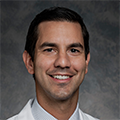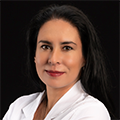In late 2019, Dr. Li Wenliang, an ophthalmologist working in Wuhan Central Hospital in China, identified the new coronavirus (SARS-CoV-2) later identified as COVID-19.
In less than six months, the COVID-19 pandemic has affected every country in the world and has caused significant health and economical damage. The United States continues to have the most cases overall. Spain has the most cases in Europe and Brazil is the most affected country in Latin America.
COVID-19 has changed our lives. People have had to adapt their lifestyles and routines to fight this invisible enemy. Because of the proximity to a patient’s face during examinations and procedures, ophthalmologists are at high risk of contracting the disease and have had to adapt their practice patterns to minimize risk of exposure for the patients, staff and physicians.
We invited three young ophthalmologists from the United States, Spain and Mexico to share their perspectives on how COVID-19 has affected their countries, working centers and professional lives.
How did COVID-19 affect your country and how did you adjust in your own practice?
 |
Luis León, MD
Anterior segment specialist
Clínica Oftalmológica de Microcirugía Ocular y Alta Tecnología (MOAT)
Castellón, Spain |
My country has been psychologically and economically devastated by the new coronavirus. There have been 25,000 official deaths in a country with 44 million inhabitants, almost 0.1% of the country’s population.
There was no time to prepare and hospitals had to respond with a truly authentic heroic spirit by caring for patients without personal protective equipment in the beginning of the outbreak, and even now, with its shortage due to the high demand worldwide.
Additionally, Spain’s main economic income came from tourism, and it has been shut down due to the pandemic. The Bank of Spain foresees a fall in gross domestic product of 14%.
A year and a half ago, I opened my private practice in Castellón, Spain. Since January 2020, I have been working exclusively at MOAT. When the COVID-19 outbreak hit us, we were starting to have a growing number of outpatient clinic visits and surgeries. Fortunately, my center is small and has been dedicated to offer a small-volume and exclusive care, but it has not been easy. For a month and half now, I have been seeing only urgent cases or patients with chronic pathologies that inevitably require face-to-face visits. Surgically, in our center we have only operated on emergency procedures.
 |
Luis J. Haddock, MD
Vitreoretinal surgeon and Assistant Professor of Ophthalmology
Bascom Palmer Eye Institute
Miami |
The COVID-19 pandemic brought major social, economic and health care changes to the United States and to the state of Florida where I reside. On March 20, the governor of Florida placed a hold on all “nonessential medical procedures,” which stopped all elective surgeries in ophthalmology and reduced clinic volumes to only urgent patients.
In order to maintain patient care, the government allowed expansion of telemedicine services. On May 1, ambulatory services resumed while maintaining physical distancing guidelines. Clinical practices made immediate changes that integrated symptom screening, temperature checks, and physical distancing of patients. In September, Florida ranked third in the highest number of cases and deaths in the nation, according to The New York Times.
Telemedicine services were quickly instituted at the Bascom Palmer Eye Institute. These virtual consultations included phone calls, video calls and hybrid visits, where patients are imaged in the office and receive a phone call from their physicians for follow-up to maintain patient care while minimizing COVID exposure to the patients and staff. We are gradually increasing the clinic volume as testing capabilities and personal protective equipment availability increases.
 |
Valentina Franco Cárdenas, MD
Vitreoretinal surgeon
Mexico City |
Mexico reached phase 3 of the SARS-CoV-2 pandemic on March 1. A sentinel surveillance model is being implemented, meaning that we are only testing a very small, but representative sample of the population. Even though Mexico’s numbers may look low for a country of 130 million people, these numbers do not express the reality. In fact, experts suggest that the real number of positive COVID cases is 30 times higher. Additionally, mortality per infected confirmed cases in Mexico appears to be higher, 9.5% compared to 7.1% worldwide.
I am currently in private practice and seeing only urgent cases in person, according to the Academy guidelines. The main teaching ophthalmology hospitals in Mexico are following this model by establishing a triage before entering the hospital and subspecialty pavilions, taking special care in improving patient awareness, education and hygiene standards before, during and after their visits. I am starting telemedicine in my private practice, for counseling only and free of charge for now.
 |
About the author: Marcela Lonngi, MD, heads the Department of Pediatric Ophthalmology and Strabismus, Fundación Hospital Pediátrico la Misericordia in Bogotá; the Department of Ophthalmology, Pediatric Ophthalmology and Adult Strabismus, Fundación Oftalmológica Nacional in Bogotá, and is an associate professor in the Department of Ophthalmology, Universidad del Rosario in Bogotá. |